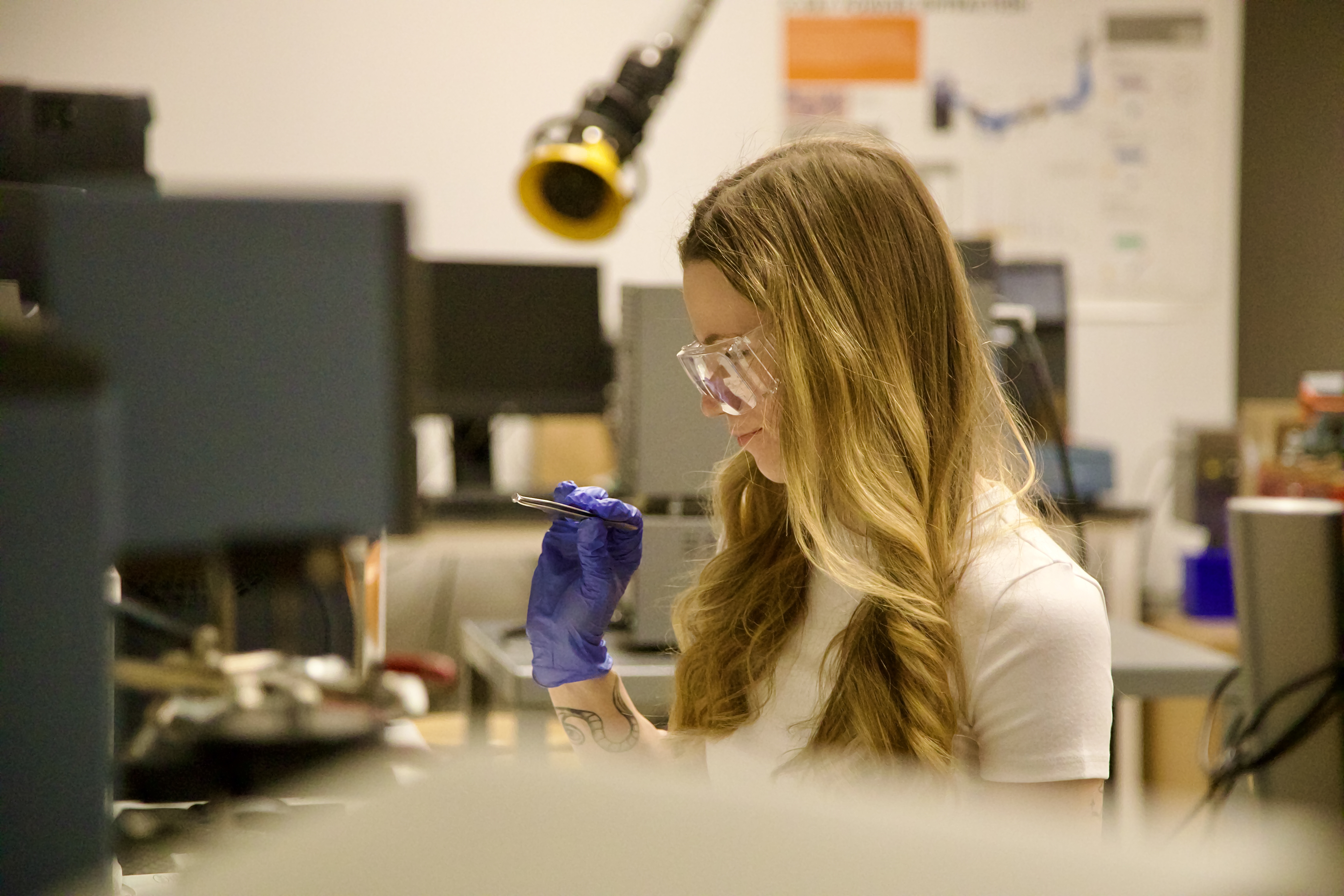Energy science and technology major Megan Bellusci explains the significance of her work and how we can reimagine energy storage.
By Tarn Bregman, IES Marketing and Outreach Coordinator

In the United States, coal-burning power plants annually produce over 100 million tons of ash. Without mitigating measures, this ash would escape from a plant’s flue. Instead, it is captured and is often disposed in landfills and ponds. Toxic to both humans and the environment, this ash can sometimes leak out into the surrounding areas. With pollutants like arsenic, lead, and mercury found in this ash, work is being done to understand how this byproduct can be handled or, even better, used as a raw material. One student focusing on this work is Megan Bellusci, an energy science and technology major at Western Washington University.
Fly ash is thermally stable, or resistant to extreme temperatures, making it a suitable candidate for unconventional battery storage, that is, batteries that store thermal energy rather than electric energy. Bellusci, under Dr. Deborah Glosser in the Institute for Energy Studies, examines the thermodynamics of coal fly ash and how it can be used as a thermal energy storage material. Their goal is to develop the ash into a usable material for concentrating solar power systems. These systems rely on mirrors to reflect solar energy onto one specific point, where that concentrated solar heat can then be transferred and used to generate power. Bellusci and Glosser’s latest paper has received attention for examining just how this all might work.
“It’s been really promising [research] and nobody’s looked particularly at what we’re looking at right now. There’s similar work, but not for our purposes. So we’re kind of jumping into something new,” said Bellusci.
Once coal fly ash leaches into waterways, it becomes toxic. And land with high concentrations of coal fly ash is uninhabitable. The most famous case of coal fly ash contamination in the United States occurred in 2008, when a dike surrounding an ash slurry pond broke, sending ashy sludge from the Tennessee Valley Authority Kingston Fossil Plant into the neighboring areas of Roane County, Tennessee. The spill stretched over 300 acres and affected nearby rivers and streams1. The hazardous material left over 50 members of the clean-up crew dead and others sick2. Today there are 325 sites across the US where coal fly ash is stored, with 45% of those sites contaminated above federal health and safety standards3.
Bellusci’s work could not only help remediate the environmental damage of coal fly ash but also find a beneficial use for what is otherwise a toxic waste product. At Western, Bellusci spends most of her research time in the lab where she examines samples of coal fly ash using a variety of technologies including scanning electron microscopes, photospectrometers, differential scanning calorimeters, and X-ray diffraction analysis. Bellusci hopes her work will lead to discoveries that can be used across the country and potentially around the globe.
“I’ve always believed that unconventional creative ways of doing things is the answer. And that’s why thermal energy storage is so cool. It’s really just looking at the building blocks of different energy transfers,” said Bellusci. “So far, from what we’ve seen, it looks like coal fly ash could be even better than what is currently used, which is molten salts.”
Not only does coal fly ash have the potential to be more thermally stable than molten salts, making it a better thermal energy storage material, but cheaper too. Salts for thermal energy storage are synthetically produced or mined from the ground, making them expensive. Coal fly ash, however, already exists as an abundant (and cheap) waste product. Additionally, Bellusci and Glosser suspect that coal fly ash has fewer embodied emissions than salts used for the purpose of thermal energy storage, though they have not yet confirmed that through research.
Under the guidance of Dr. Glosser, Bellusci continues to study how coal fly ash can be used to store thermal energy. Bellusci believes it could have a role in the future of renewable energy and is worth understanding.
“What this type of work is looking at is taking the time to focus on things we’ve already thrown away and using them for another purpose, so we’re not just creating more waste,” said Bellusci.
If you’re interested in learning about coal fly ash contamination in your home state, visit Ash Tracker for more information.